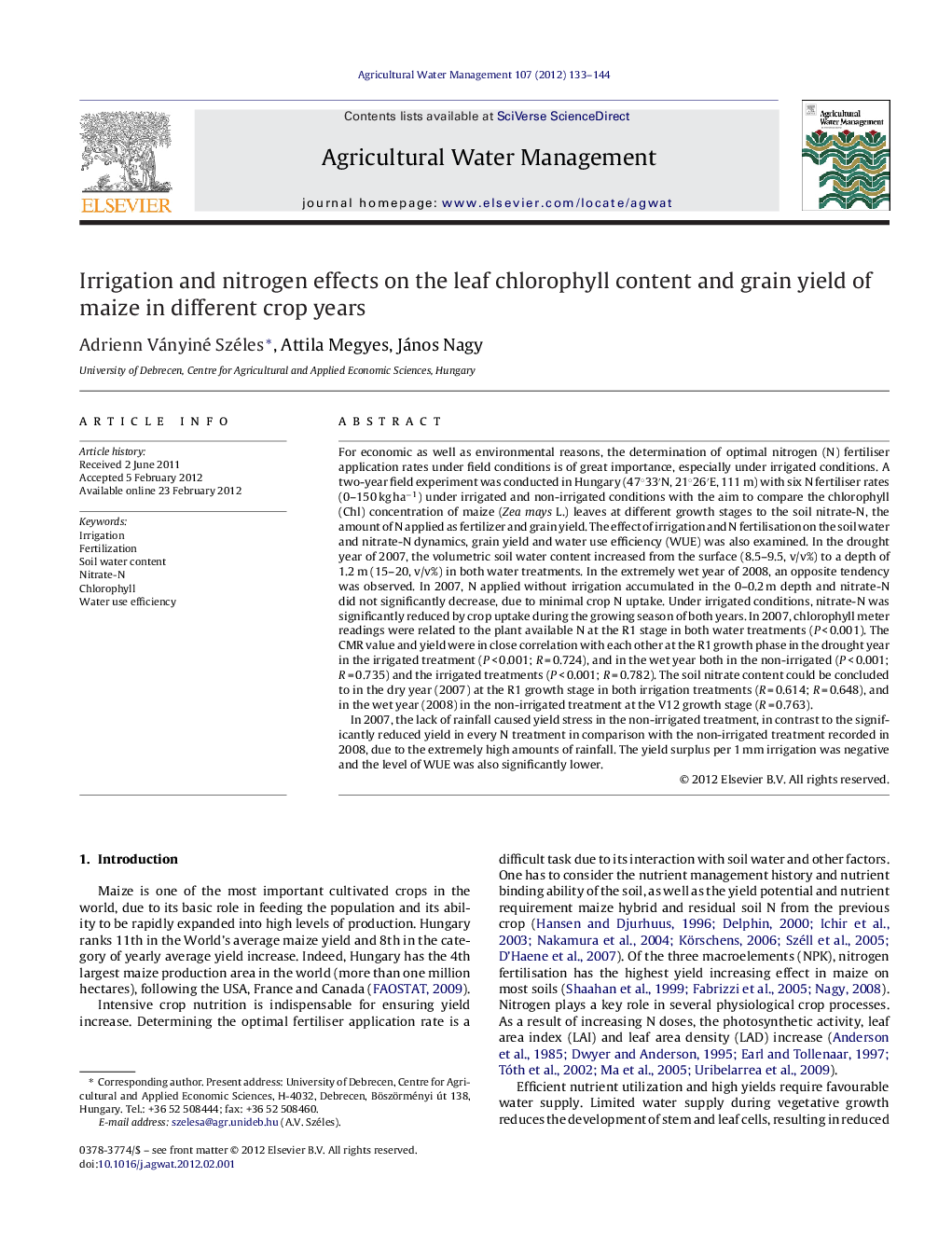| کد مقاله | کد نشریه | سال انتشار | مقاله انگلیسی | نسخه تمام متن |
|---|---|---|---|---|
| 4479206 | 1622972 | 2012 | 12 صفحه PDF | دانلود رایگان |

For economic as well as environmental reasons, the determination of optimal nitrogen (N) fertiliser application rates under field conditions is of great importance, especially under irrigated conditions. A two-year field experiment was conducted in Hungary (47°33′N, 21°26′E, 111 m) with six N fertiliser rates (0–150 kg ha−1) under irrigated and non-irrigated conditions with the aim to compare the chlorophyll (Chl) concentration of maize (Zea mays L.) leaves at different growth stages to the soil nitrate-N, the amount of N applied as fertilizer and grain yield. The effect of irrigation and N fertilisation on the soil water and nitrate-N dynamics, grain yield and water use efficiency (WUE) was also examined. In the drought year of 2007, the volumetric soil water content increased from the surface (8.5–9.5, v/v%) to a depth of 1.2 m (15–20, v/v%) in both water treatments. In the extremely wet year of 2008, an opposite tendency was observed. In 2007, N applied without irrigation accumulated in the 0–0.2 m depth and nitrate-N did not significantly decrease, due to minimal crop N uptake. Under irrigated conditions, nitrate-N was significantly reduced by crop uptake during the growing season of both years. In 2007, chlorophyll meter readings were related to the plant available N at the R1 stage in both water treatments (P < 0.001). The CMR value and yield were in close correlation with each other at the R1 growth phase in the drought year in the irrigated treatment (P < 0.001; R = 0.724), and in the wet year both in the non-irrigated (P < 0.001; R = 0.735) and the irrigated treatments (P < 0.001; R = 0.782). The soil nitrate content could be concluded to in the dry year (2007) at the R1 growth stage in both irrigation treatments (R = 0.614; R = 0.648), and in the wet year (2008) in the non-irrigated treatment at the V12 growth stage (R = 0.763).In 2007, the lack of rainfall caused yield stress in the non-irrigated treatment, in contrast to the significantly reduced yield in every N treatment in comparison with the non-irrigated treatment recorded in 2008, due to the extremely high amounts of rainfall. The yield surplus per 1 mm irrigation was negative and the level of WUE was also significantly lower.
► We examine the effect of irrigation and N fertilisation on the soil water, nitrate-N dynamics, grain yield and WUE.
► We compare the maize chlorophyll concentration to soil nitrate-N and we conclude to soil N supply and grain yield.
► CMR values indicate the plant available N at R1 stage in both irrigation treatments in 2007.
► We predict yield at V12 stage without irrigation and at V6 stage with irrigation.
► We reliably predict yield at V12 stage and we conclude to soil nitrate-N in both irrigation treatments in 2008.
Journal: Agricultural Water Management - Volume 107, May 2012, Pages 133–144